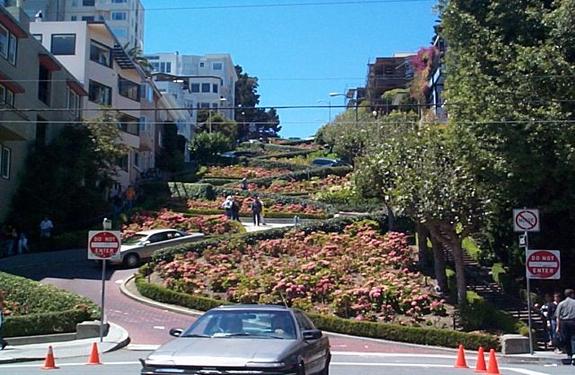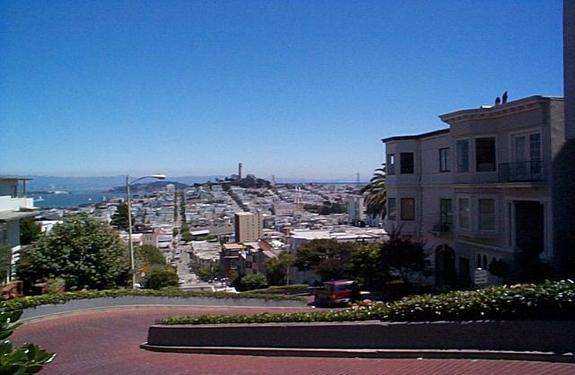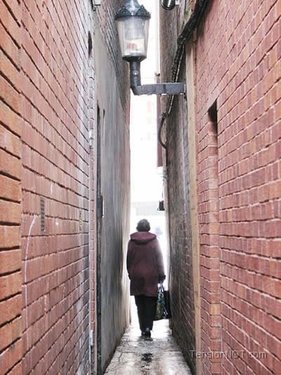

SAN FRANCISCO, CALIFORNIA USA
Lombard Street actually extends into the city, but the famous part of it is between Hyde Street and Leavenworth Street. The brick-paved street has eight switchback curves within the single block, and there are about 250 steps on either side for pedestrians. The street is also known for having beautiful landscaping, with hydrangeas on either side. These flowers don't just make the street look nice; they also hold back erosion, which would otherwise be a problem on the street. Safety As a straight street, the grade was 27 percent on Lombard Street, but adding curves brought that grade down to 16 percent. Because the curves made the street safe enough for cars, property values rose, which is why many homeowners supported the design change. To create an even safer street, it was changed to be a one-way street in 1939. Tour buses were banned in 1980 for both safety and practicality reasons. Controversy
Lombard Street has been a point of controversy since it was first redesigned. Originally, residents were supposed to pay for maintenance of the landscaping along the street, but many refused to pay. One resident, Peter Bercut, actually hired a bulldozer to remove all of the plants before dawn one early morning, since he was often stuck trimming neighbors' hedges. In their place, he planted flowers, which created an erosion problem until he realized that hydrangeas were the key to these water problems.
In addition, there has been controversy about access to the road since tourism on Lombard Street exploded in the 1950s. In 1970, 1977 and 1987, residents petitioned to have the street closed to everyone except residents, but the San Francisco Board of Supervisors has found no safety reasons to close the street. Residents also petitioned to stop developments on this street in the past.
Other than simply driving down the street or walking up it, you can visit a number of other tourist locations on or near Lombard Street. This street is home to Telegraph Hill and Coit Tower. Home number 953 was used for MTV's The Real World in 1994. From the top of the hill, you can see Alcatraz and the San Francisco Bay when there is not too much fog. The entrance to the Presidio, an historic national park that was once a military post, is also located on Lombard Street.
 |
 |
 |
EXTER, ENGLAND
 |